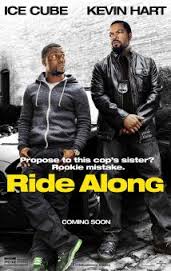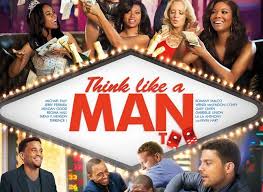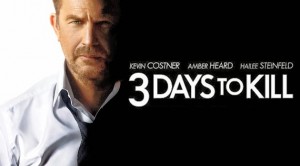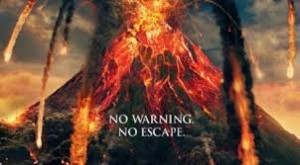 Christopher Lennertz is one of Hollywood’s busiest composers. Lately, he has specialized in writing scores for comedies like Kevin Hart’s Ride Along, with two more big comedic projects later this year: Think Like A Man Too (with Ride Along director Tim Story) and Horrible Bosses 2. In addition, he also does the music for the CW series Supernatural and the NBC drama Revolution. Past credits include last year’s Identity Thief, Think Like A Man, Horrible Bosses, and Alvin & The Chipmunks. He was generous in taking time from his very busy schedule to talk to me.
Christopher Lennertz is one of Hollywood’s busiest composers. Lately, he has specialized in writing scores for comedies like Kevin Hart’s Ride Along, with two more big comedic projects later this year: Think Like A Man Too (with Ride Along director Tim Story) and Horrible Bosses 2. In addition, he also does the music for the CW series Supernatural and the NBC drama Revolution. Past credits include last year’s Identity Thief, Think Like A Man, Horrible Bosses, and Alvin & The Chipmunks. He was generous in taking time from his very busy schedule to talk to me.
How did you get involved in writing music for movies?
I started loving music at a very young age, I started playing the trumpet when I was nine and then I think I wrote my first song in fifth grade. Then I realized that the guitar is much cooler and the girls seem to like guitar players much better so I started playing the guitar when I was 13 and I just got more and more into music. I played in a rock band and as I really started to get into it, I studied classical and jazz and then coming out of California, I originally studied guitar and then I found myself in my sophomore year of college recording a session with Henry Mancini.
Wow!
Yeah, that sort of changed everything and I sure went back the next day, changed my major and decided I wanted to be a composer. I think it was just watching that session that gave me the impetus to sort of change my focus and focus on writing rather than on performing and that is a big difference. For me, that was a really big move.
What it is about writing that makes writing a score a comedy especially challenging? Especially something like Ride Along which is really 60% action movie, 40% comedy; how do you cover both types of themes in composing?
You’re right. There are sort of three different styles of music in Ride Along. One is most definitely the comedy and that is usually focusing on what Kevin Hart is doing. But one of the things that Ioved about that movie and that I liked about those types of comedies is that it allows you to sort of us set up the comedy with reality and sort of hyper reality so what that ended up doing was playing Ice Cube really, really straight, very, very tough no-nonsense, so that when Kevin did get funny, everything sort of became a big contrast. Same thing with the action; I really treated the action as real.
At what stage in a movie like that do you get involved? Is it early on or after the story has been shot?
This one I came onto about halfway through shooting and I had worked with the director, Tim Story, on Think Like a Man, so we had a relationship. At that point it was relatively quick that I sort of jumped in and started to come up with ideas and Tim and I started working on our approach and figuring out what he really wanted out of the music and that is sort of what put it to the next level.
I know you can’t talk too much about Think Like a Man Too, but you are working on that now aren’t you?
I started on it last week. All I can tell you is that it is just as funny, if not possibly funnier than the last one but it is also very similar in the fact that the ending is even more romantic and it is really kind of sweet. Again it is a great movie because it is funny for guys and super romantic at the end. It is just all around a great movie and I think it is just going to be bigger than the first one.
Do you just create the themes or do you also work on the adapting them to individual scenes?
By the end of the day every single scene has gone through trial and error. I try to make it fit every bit of the action just the way Tim wants it to and that’s really how we do it. It is a very intricate process going through the movie from start to finish we will probably, on Think like A Man 2 be about a six week to two month process. Usually what happens is I’ll write for a brief period of time, I’ll write for five days, seven days, have him come in, check out how the process is going, give me some directions, continue writing, that kind of thing and then slowly but surely we get through the whole thing and that is definitely what I assume is going to happen with this one too.
What’s on your iPod? What are you listening to when you are in the car?
Oh wow! You know, that is one of the reasons I love doing what I do. If you looked at my playlist in the car you would find Metallica, you’ll find U2, you’ll find the Beatles. You will also find Danny Elfman, John Williams and you also find John Coltrane and Miles Davis and a bunch of stuff like that so I really like the idea of being very eclectic with music because it really keeps things interesting. I think every style of music has a valid thing to contribute to people’s lives and I think that I love the fact that I can float around in various multiple genres.
Can you give me an example of a movie where you think that the music works really, really effectively to create the mood and tell the story?
There’s so many. I think John Williams is sheer perfection. Indiana Jones was sheer perfection and Star Wars and at the same time I think of Braveheart. The Godfather was perfect. That was really one of my favorites.
If you could pick any movie from the past that you could magically transport yourself back in time and create a score for, what movie would you pick?
It is really hard to do that because the movies that I love the most already have what I would consider to be phenomenal scores and so when I go back and think about that I think one that always comes to mind that I would love to get a crack at is Terminator. Because I feel like, and let me explain this and be clear, I think that the music for Terminator was absolutely perfect the year that it came out but because it was so synthesized it becomes very traditional. It becomes very dated 80’s music, an example of that where the music was so current as far as what the instruments were, that later on you watch it and you can’t get it out of your head how dated it sounds so I think that given an opportunity, I would love to take a shot at it. I would love to do a big sword and sorcery kind of thing. I would love to do a Lord of the Rings or Braveheart or something like that but then again, who wouldn’t?





